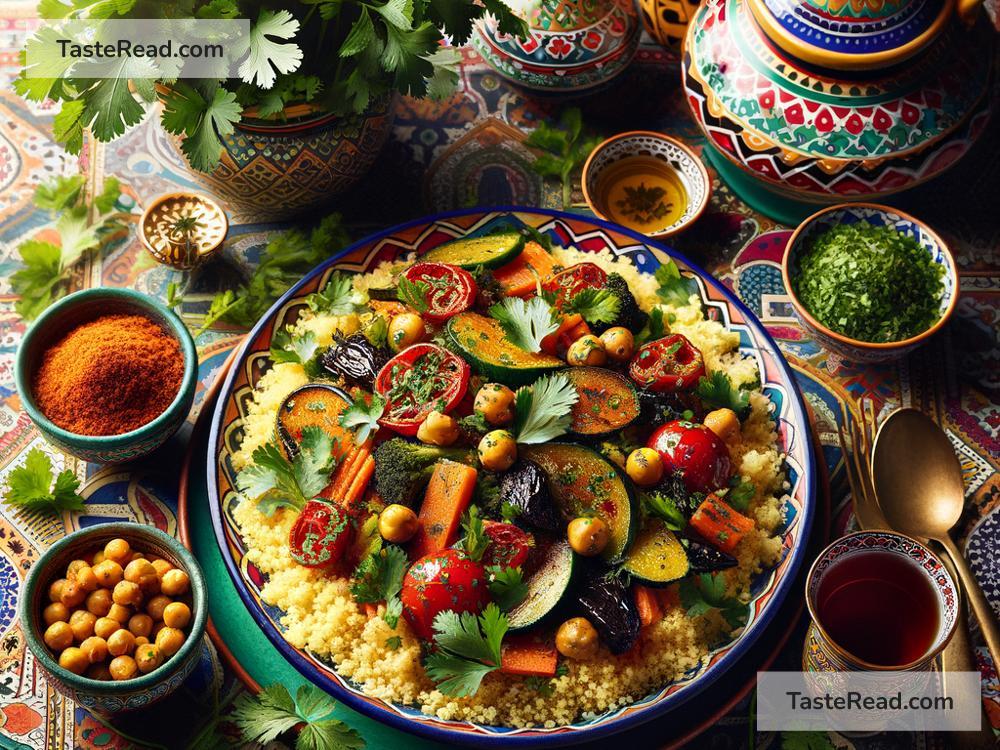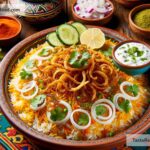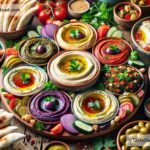Indulging in Bold Herb Infusions in North African Couscous in Morocco
Morocco is a land of mystery, beauty, and rich culinary traditions. From vibrant souks filled with colorful spices to streets buzzing with the smell of fresh bread, Moroccan cuisine is a feast for the senses. One of its most iconic dishes is couscous, a humble yet versatile grain that serves as the foundation for a multitude of mouthwatering meals. But what truly sets Moroccan couscous apart is its bold use of herbs and spices. In this blog, we’ll dive into the magic of North African couscous and explore the unique herb infusions that make it a flavorful masterpiece.
What is Couscous?
Couscous might look like rice or tiny grains, but it’s actually a type of pasta made from durum wheat semolina. In Moroccan homes, couscous is more than just food—it’s a symbol of togetherness. Traditionally, it is served on Fridays, the holy day of Islam, when families gather to share a meal after prayers. The dish is often presented on a large communal plate, meant to be enjoyed by everyone at the table.
What makes Moroccan couscous special is how it is layered with vegetables, meats, and spices, creating a complete meal in one dish. But the real magic lies in the herbs—those vibrant greens and fragrant leaves that turn couscous into a bold and unforgettable experience.
The Role of Herbs in Couscous
Herbs are central to Moroccan cooking, and couscous is no exception. Fresh parsley, cilantro, mint, and sometimes dill are used liberally in Moroccan kitchens. These herbs not only provide fresh, earthy flavors but also balance out the richness of meats or the sweetness of dried fruits such as raisins and apricots.
In Morocco, herbs are treated with love and attention. Instead of sprinkling them last-minute, Moroccan cooks infuse them into the broth or steam them into the couscous itself. This technique packs the dish with layers of flavor, ensuring that every bite bursts with bold, aromatic notes.
The Art of Couscous Preparation
Making couscous in Morocco is an art form, often passed down through generations. It begins with steamed couscous grains, which are gently fluffed by hand to achieve a light and airy texture. The grains are steamed multiple times, ensuring they are tender yet retain their structure.
Once the couscous is ready, it’s paired with vegetables like carrots, zucchini, and turnips. Meat, often chicken, lamb, or beef, is slow-cooked in a spiced broth to absorb rich flavors. This broth plays a crucial role—it’s infused with spices like turmeric, cinnamon, ginger, and cumin, as well as fresh herbs picked just before cooking.
The finished dish is a visual delight. Bright orange carrots, green zucchini, golden couscous, and tender meat are all arranged neatly, topped with fresh, fragrant herbs. Every component has absorbed the bold, herbal flavors, so every bite is a new experience.
Morocco’s Love Affair with Spices and Herbs
Step into any Moroccan market, and you’ll find towering piles of colorful spices and bunches of fresh herbs. Spices like cinnamon, paprika, and saffron are blended with fresh ingredients to create complex flavor profiles. Herbs, however, are what bring a dish to life. Mint, parsley, and cilantro are everywhere—from salads to main dishes and even drinks.
Take a sip of Moroccan mint tea, for example, and you’ll understand just how much this culture celebrates herbs. Infused with fresh mint, sugar, and green tea, it’s a perfect balance between sweetness and earthiness.
In couscous, herbs play the same role—they refresh the dish, add depth, and tie all the ingredients together. Cilantro, with its slightly citrusy flavor, brightens the dish, while parsley adds freshness. Mint leaves, often added raw at the end, enhance the dish with their cool, bold aroma.
Couscous Beyond the Plate
In Morocco, couscous is more than just food; it’s a cultural experience. Many locals believe couscous brings people together and reinforces bonds within the family. When you sit around a communal dish of couscous, you’re doing more than eating—you’re sharing stories, laughter, and traditions. And when that couscous is infused with bold herbs, it becomes not just satisfying but also invigorating.
Travelers to Morocco quickly fall in love with this dish. Whether served vegetarian-style or topped with tender lamb, couscous is always a reminder of the country’s incredible culinary heritage. Visitors often leave with memories of bold herb-infused bites that linger long after their journey ends.
Conclusion: A Culinary Adventure Awaits
Morocco’s couscous is much more than a grain-based dish—it’s a sensory adventure. It’s a celebration of herbs, spices, and the art of layering flavors. When infused with fresh mint, cilantro, and parsley, Moroccan couscous transforms into a dish that combines tradition and boldness in every bite.
If you ever find yourself wandering the streets of Marrakech or Fez, don’t miss the chance to indulge in this herb-infused masterpiece. Whether shared with locals around a big communal dish or savored at a restaurant, Moroccan couscous will undoubtedly leave you with a fond memory—and an eager craving for more.
So why not bring a little taste of Morocco to your own kitchen? Experiment with fresh herbs, spices, and a pot of steaming couscous. You’ll soon discover why this beloved dish has captured the hearts of people around the world.


